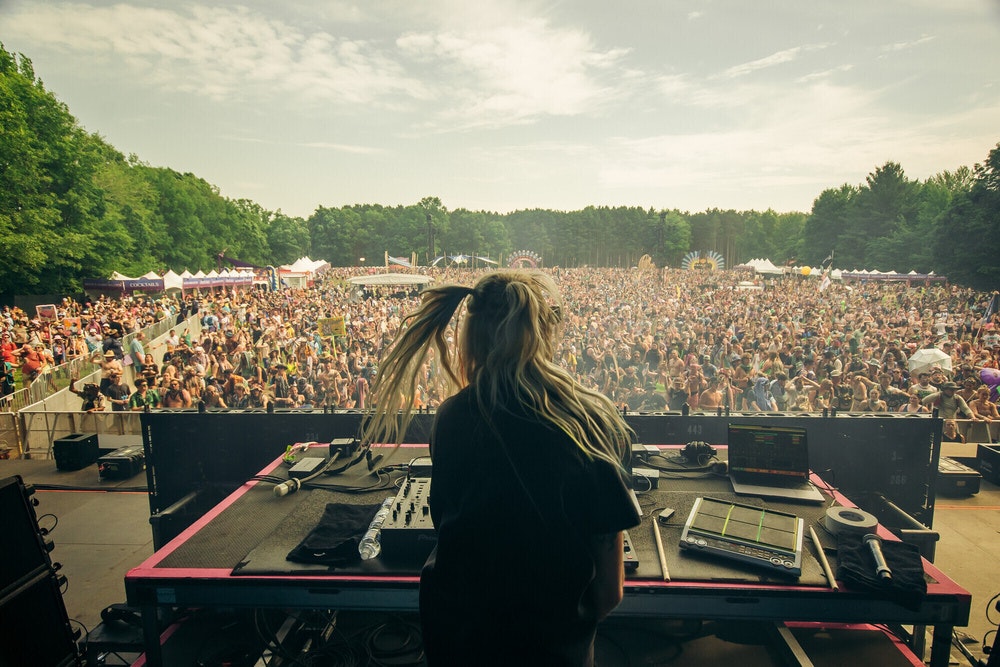
■ Features
“I want to create timeless, emotional music that still hits you in the chest.”
From knuckling down in the recording studio to her DJ sets and live shows, we get a peek into the creative process of future bass up-and-comer Maddy O’Neal.
In our exclusive interview, the Denver-based artist discusses her biggest inspirations, falling in love with house music, her can’t-live-without plugins, and reveals exactly what’s on the desk during her "Maddy Live" sets.
She also shares advice for producers thinking of playing electronic music live for the first time and talks us through how she prepares for performances on some of America’s biggest stages, including Coachella, Lollapalooza, Electric Forest, Envision, Forecastle, Camp Bisco, and Red Rocks, to name just a few.
The I grew up in a very musical family—my dad and brother both played in bands. I thought it was too late for me at a certain point because I hadn’t stuck with an instrument growing up, but I always envied the community and joy they got from creating.
I moved to Colorado in 2008 to go to CU Boulder and was exposed to the electronic music explosion happening at that time. I was so blown away that I decided to do some research of my own. Essentially, I taught myself how to produce by watching YouTube tutorials, reverse engineering, sampling vinyl, and experimenting on my own. Little did I know it would turn into a career all these years later.
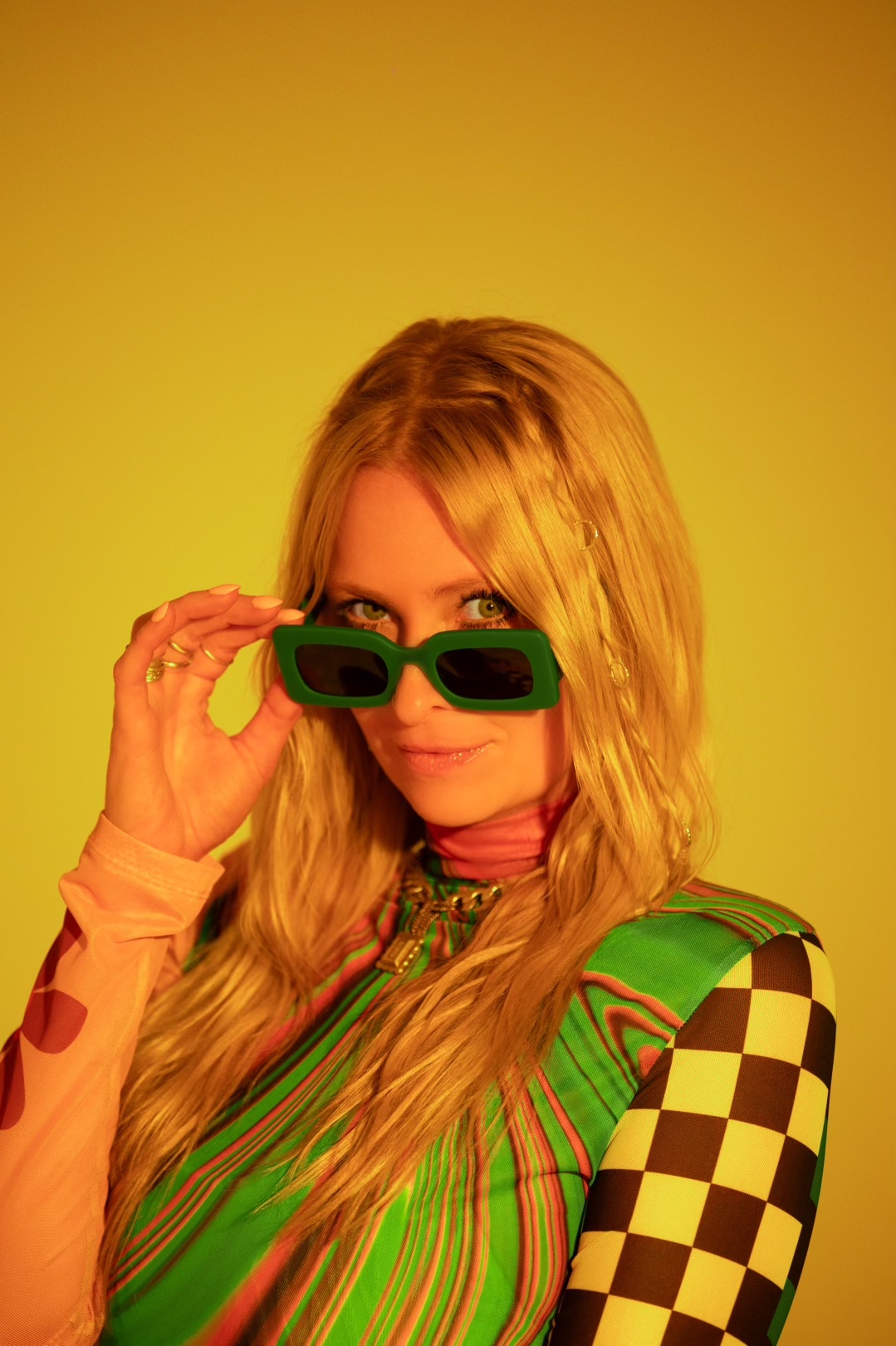
I’ve described it in the past as "Dirty Funky Bass Music—but make it pretty.” I’ve definitely been known to cross genres and be a bit more diverse than your average "140 bass producer."
I draw from funk and soul influences, boom bap hip-hop, warmer, more analog tones, and I like to keep my bass in the melodic realm. I typically write songs rather than just beats—I love storytelling and borrowing more from pop structure.
I came up in the Pretty Lights ecosystem. That definitely had a major impact on me as a young artist. We now share the same manager, and their crew and network have become my family.
Back in the day, when Derek had Pretty Lights Music as a record label, I looked up to all the artists on that roster—they felt timeless in the way they sampled and drew from nostalgic techniques with gritty grooves in the mix. You can definitely hear that influence in my records. I want to create timeless, emotional music that still hits you in the chest.
A lot of my sound design is done inside the box these days because there are so many amazing plug-ins available now.
Outside of the box, I mainly use keys/synthesizers and a drum pad, and I’ll sometimes still sample vinyl like I used to. I also work with outside musicians and vocalists a lot to add live instrumentation to the mix; guitarists, horn players, singers, rappers, turntablists.
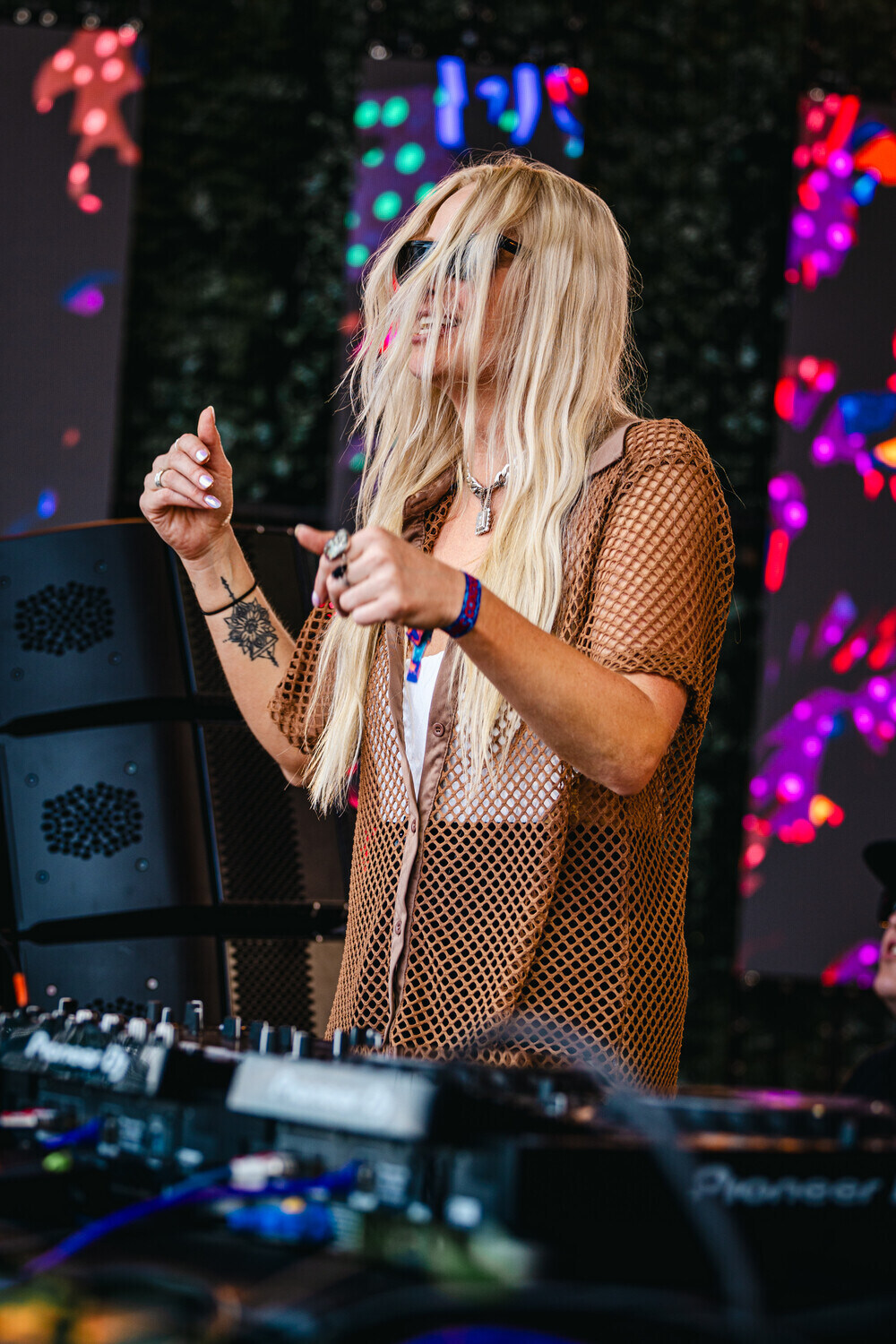
My Akai MPD232 has been by my side since the beginning.
I’m a big chopper—I love slicing samples to MIDI and essentially using the MPD link as an MPC. This goes for drum samples, vocals, instrumentation, etc. I’m very rhythmic in my approach to a track, so that's usually my go-to for experimentation.
Serum is probably my most used synthesizer. It is just so user-friendly and versatile. I also love all of the OUTPUT plugins, like Portal and Arcade. The FabFilter bundle is also a must.
Using live instruments brings a human element that naturally infuses more soul into any track. We now live in a world where you can make an entire song generated by AI. When you hear an instrument in the mix, you can hear the player’s raw, imperfect emotions coming through.
I like the feeling and the image it evokes—even in a sea of digital bleep bloops, it cuts through in a powerful way.
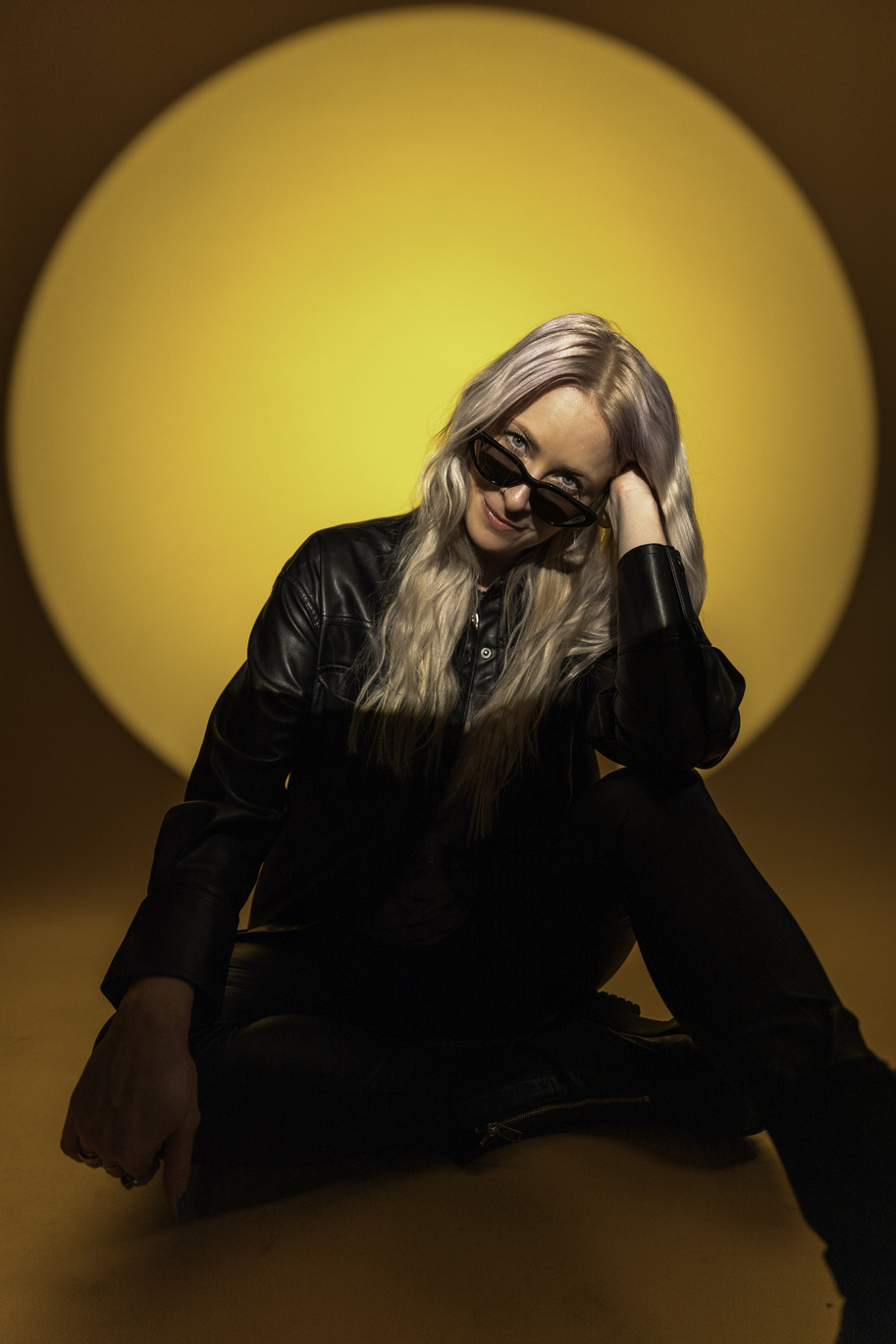
I do. When I finish a song, I like to export at least two stems that I could potentially play with live in an improvisational way—usually drum stems and vocal chops.
The fun thing about playing in Ableton is having the freedom to interact with my own music on a more broken-down level than just playing masters. I can chop up the vocals used into my drum pads and play them differently every time or extract some big drum hit moments to add to the energy of a particular part of a track. Because I've been doing it this way for so long, I think I definitely subconsciously think about it while I'm producing, but it isn’t really until the end that I choose those elements. It does help that I use the MPD in production because I can replicate the way I created something live in the same way.
When I do my "Maddy Live" sets, my setup consists of a laptop running Ableton, my Akai MPD232, and a Roland SPD-S (yes, the ancient one—it’s indestructible). I use both drum pads as MIDI controllers reading various drum racks and cycling through them throughout the set. The SPD-S is mostly percussion and drum elements, and the MPD handles a lot of sample chops and FX triggering/launching.
I’ve stuck with a pretty similar setup over the years, apart from when I was doing my old duo project. I’ve thought about merging this setup with CDJs and having a drum pad or two on the side, but this has worked so well for me—if it ain't broke, don't fix it, I guess?
For my DJ sets, I use 3 or 4 CDJs. The DJ sets are mostly a showcase of my taste in music, especially the MadHaus sets. I've been having so much fun doing these because I’ve fallen in love with house music more and more over the last few years. It's so fun to put together my selections in a cohesive way that still feels like I have a pocket in that world.
My bass DJ sets are easier for me to blend my own originals in. I always keep a running playlist for my DJ sets to set myself up for success—like I'm always digging and keeping it fresh. If I hear something, I’ll screenshot and download it later.
The live sets take much more planning because I have to export stems; my catalog is only so large, so I have fewer options for transitions that work well. It definitely requires much more careful planning to prep those live moments.
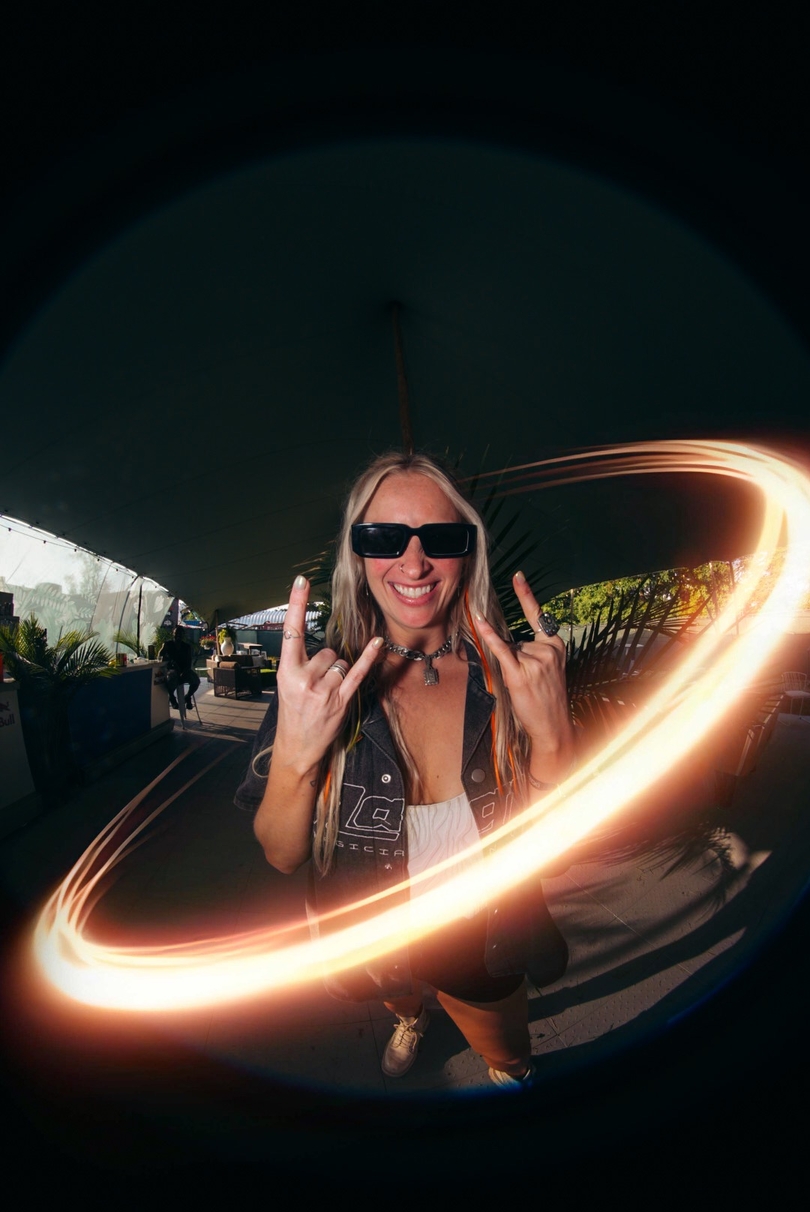
Figure out what your strengths are—it doesn't need to be anything crazy, but find an element you think you’ll be able to play live confidently and have fun with. Whether it's vocals, drums, or keys, if you think about this while you're still making your song, it will make your life a whole lot easier when it comes to playing it live. Oh, and make sure to export your stems separately to allow for flexibility.
Electric Forest this year was a major highlight for me. I played for probably the biggest crowd I've ever played for on the Thursday at 5PM. I had no idea people would show up like that so early in the day and early on in the festival, so I was taken aback. Later on, I also got to do a 360 MadHaus set at the Honeycomb stage, and it just went off. The vibes were high that whole weekend; Electric Forest just never disappoints—die-hard fans, incredible production, and incredible crowds.
My ultimate goal is to headline Red Rocks. To this day, it is the coolest venue I have had the honor of playing, and it's been in my backyard in Colorado from day one.
One day, I will get to curate my own show there; that is the ultimate dream. It’s just a little slice of heaven that feels intimate and massive at the same time. It’s so magical staring up at a wall of people from that stage.
“A true banger will MAKE YOU FEEL something...make you want to MOVE. This track was inspired by Lil’ Kim’s vocal samples in ‘Quiet Storm’ and built around that concept. It evolved into a beautiful synth heavy story. With this being one of the first tracks on the record, I really wanted to make a statement.” - Maddy O’Neal
